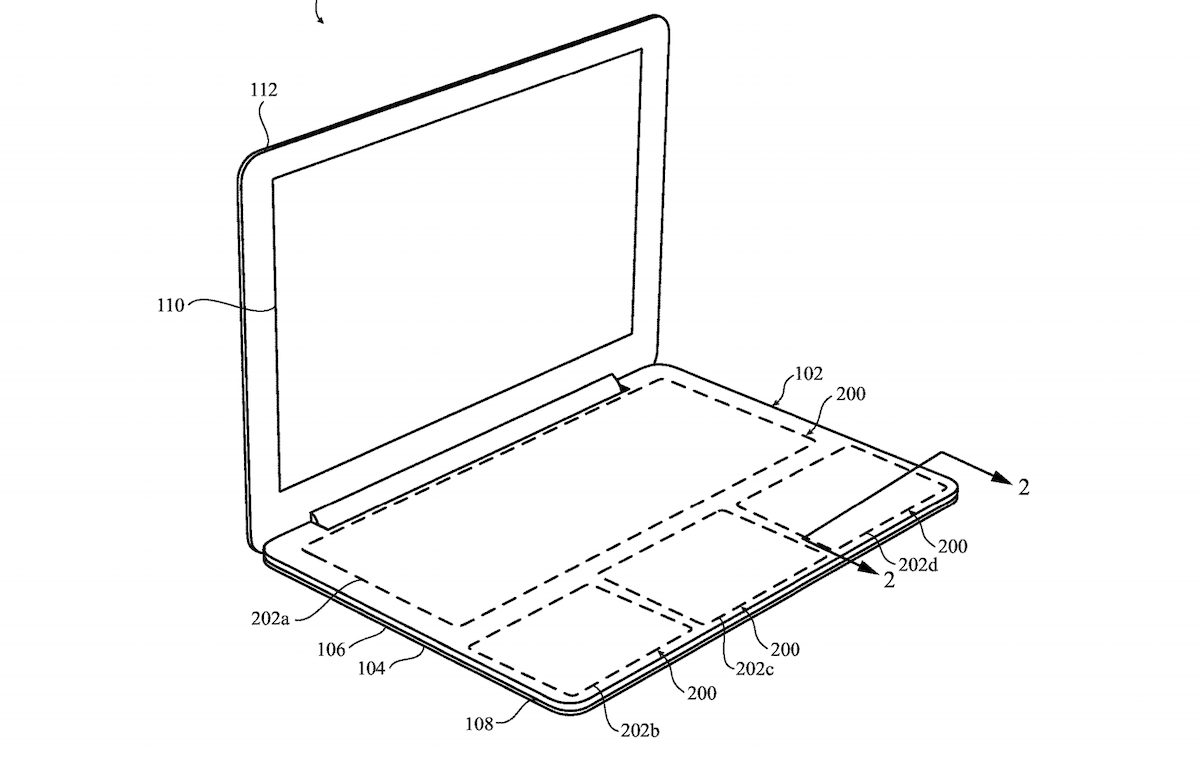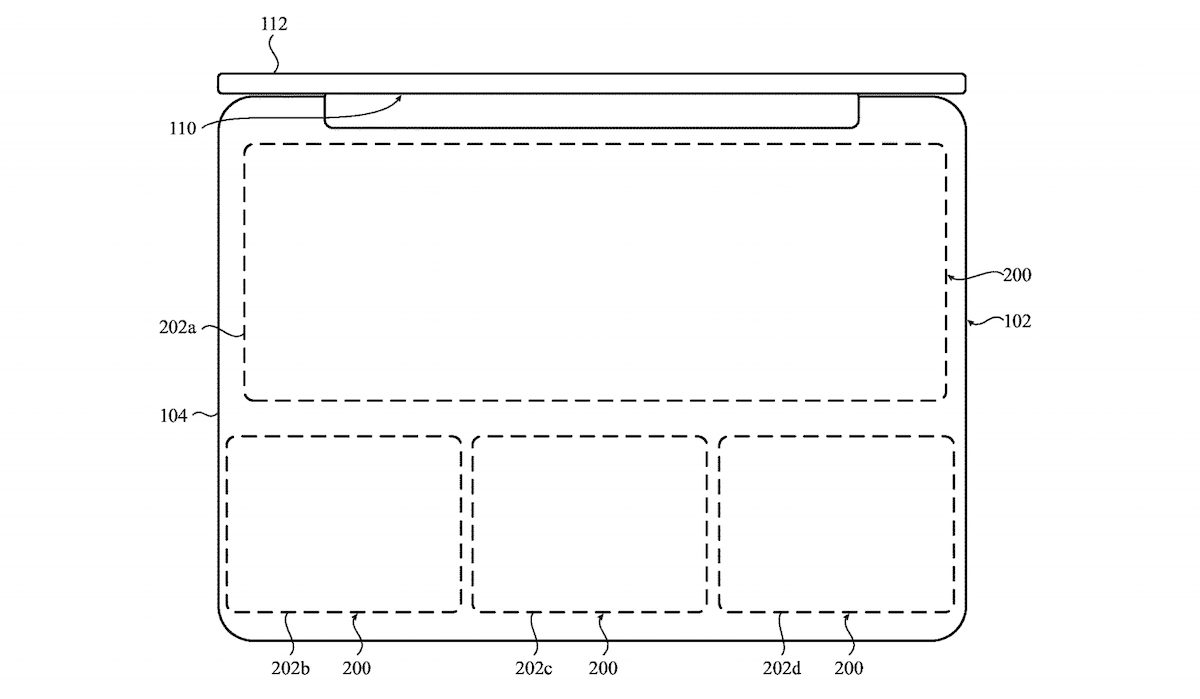A new filing published patent by the U.S Patent and Trademark Office shows that Apple is working on a new solid-state keyboard technology for next-generation Macs. Titled “Configurable force-sensitive input structure for electronic devices” the patent reveals a new design of keyboard without physical keys and has a trackpad. The new keyboard technology would allow users to add their preferred interface and them anywhere on the MacBooks surface grid.

Similar to iPhone and iPad touchscreen keyboards, the new solid-state keyboard will use multiple layers to give the sense of touch to relieve the tiredness of typing on a hard surface and to function.
A configurable, force-sensitive input structure for an electronic device is disclosed. The input structure has a metal contact layer, a sense layer positioned below the metal contact layer, and a drive layer capacitively coupled to the sense layer. The input structure may also have a compliant layer positioned between and coupled to the sense layer and the drive layer, a rigid base layer positioned below the drive layer, and a set of supports positioned between the metal contact layer and the rigid base layer.
A new patent reveals that Apple will ship future MacBook might ship with new configurable force-sensitive solid-state keyboards
The filing argues that conventional laptops come with a trackpad and keyboard with keycaps, either protruding or placed in the casing. Those are “susceptible to damage” by debris, food particles, or experience internal damage and in some cases, “if a single component is damaged, lost, or becomes inoperable, the entire input device may become inoperable.” Therefore, an input structure (keyboard) with a metal contact layer for dimensionally- configurable input region, contact, and base portions, and the partially flexible contact portion of the casing would be a more durable alternative to conventional keyboards.
The patent describes the functionality:
The input structure comprises a metal contact layer defining a dimensionally-configurable input region, a sense layer positioned below the metal contact layer, a drive layer capacitively coupled to the sense layer, a compliant layer positioned between the sense layer and the drive layer, and a rigid base layer positioned below the drive layer, wherein the sense layer and drives layer cooperate to sense an force exerted on the metal contact layer.
The electronic device comprises a metal casing having a contact portion, and a base portion positioned below and coupled to the contact portion. The electronic device also includes a group of holes formed through the contact portion, and an input structure positioned within the casing and below the group of holes. The input structure includes a sense layer positioned below the contact portion of the metal casing, a drive layer positioned beneath the sense layer, a compliant layer positioned between and coupled to the sense layer and the drive layer, and a set of supports positioned within the compliant layer. The input structure may capacitively detect a force and a location of a force exerted on the contact portion of the metal casing.
The electronic device comprises a metal casing comprising a partially-flexible contact portion, and an input structure positioned below and secured to the partially-flexible contact portion of the casing. The input structure comprises at least one input area formed on a portion of the partially-flexible contact portion. The input structure is configured to provide a group of interchangeable input devices within the at least one input area formed on at least the portion of the partially-flexible contact portion.

It must be kept in mind that Apple files for several patents in a year and not every new technology passes through the development phase to become a product.
Via PatentlyApple
Read More: